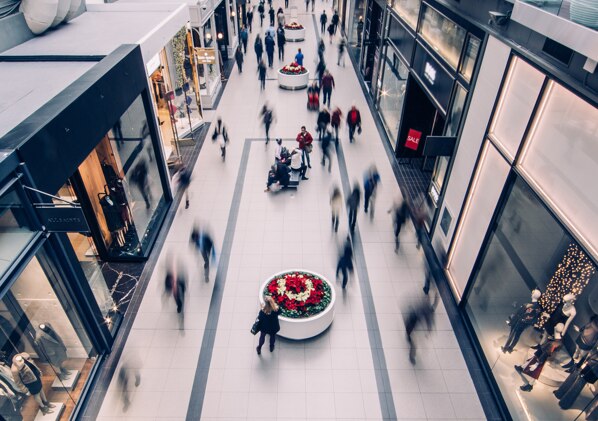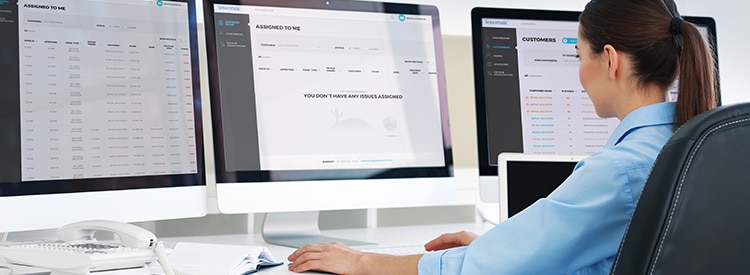Article
How can retailers & shopping centres improve customer loyalty?

Today’s retail market is highly competitive: retailers and shopping centres face a major challenge in not only attracting new customers but also holding on to existing ones. For years, shoppers have been offered access to cards and special offers in return for loyalty – in fact, nearly three quarters of retailers offer such schemes, and shopping centres are now increasingly making this part of their marketing.
Yet despite this, 54% of consumers in the UK alone think it takes too long to earn these rewards, while a third regularly forget their cards. With so many retail businesses focussed on offers and schemes, how much do they really know about customer loyalty beyond this?
Most shoppers return to the same locations again and again, be it their local high street, shopping centre, or out of town retail park. Retail organisations need to be utilising this information to understand their regular customers, what keeps them coming back, and ways to build on their existing audience.
Understand the current position:
Retail consumers offer a wealth of information, but only by bringing this data into one coherent stream can loyal customers be identified. Before launching into changes to improve loyalty, retailers and shopping centres should ensure they fully understand their existing customers and identify insights about what differentiates loyal customers from the rest.
People counting solutions help retailers and shopping centres tell who’s coming in the entrance, but to truly understand their shopping behaviour, businesses need to know what happens after the shopper walks through the door. One way this can be achieved is by anonymously identifying mobile devices as they enter the venue. These type of counting devices can, for example, differentiate percentage of new and repeat visitors and also analyse dwell time in locations on the shop floor or around the shopping centre.
Crucially, this offers insights not only into who the shopper is, but also what their expectations are, and how they choose to interact with the store or centre. By understanding existing loyal customer behaviour, retail businesses will be able to optimise the environment to drive value and keep the shoppers, new and returning, coming through the door.
Solve problems:
Once retailers and shopping centres have identified the behaviour of loyal customers, this can be built upon with insights into pain points within the customer journey – and a key factor in picking out these components is the data generated by retail intelligence systems.
Retail organisations know customer service has a big impact on loyalty; most shoppers value well-trained employees who act as trusted advisors to make them feel special and valued when in store or navigating through the centre. Combining footfall analysis with transactional data will help retailers identify times at which shoppers fail to complete their purchases and shopping centres identify which stores are not driving traffic, in order to get to the root cause of the problem.
There are a number of scenarios that can cause a drop in performance. For example, the data we produce for retailers often reveals visible dips in sales during times where there is an increase in casual staff on the shop floor, who may not be as familiar with the products as full-time staff. As a result of this insight, managers can devote more time to implementing training, or ensuring there is a balance of casual and experienced staff rostered at all times.
Add value:
Retail businesses are always hunting for ways to keep customers interested and motivated to shop. There are tried and tested techniques – sales promotions, loyalty cards, and late night opening once a week, to name a few. Yet influences such as longer working hours, multi-channel routes to purchase, and dependence on technology are disrupting the existing rules of retail, and what has worked previously may no longer prove relevant.
Layout is hugely influential on the customer’s in-store or in-centre experience. Familiarity is good, but failing to adapt physical retail’s look and feel to modern shopping habits could reduce its customer appeal. If managers and senior staff have access to relevant customer insights, they can respond to the customer’s interactions within a location. Similarly, special offers work best when they’re seasonal or tap into current preferences, and are displayed in the right way. If retail businesses are able to measure relevant behaviour, such as peel off rate, they can share these as actionable insights with the relevant store or centre and poorly optimised promotions can be improved mid campaign.
To truly add value to the customer journey and secure loyalty, retailers and shopping centres need to innovate and test their loyalty techniques. They should be looking at their analytics to determine whether these methods add value, and to adapt efforts in response to consumer reaction.
Are you measuring how the in-store or in-centre experience impacts customer loyalty? ShopperTrak’s Interior Analytics solution can bring granular detail to your shopper behaviour analysis. Contact us to find out how Interior Analytics can help you understand your customers as individuals and improve site performance.
Explore Related Topics

Ready to see how Sensormatic Solutions can transform your bottom line?
Contact UsStay one step ahead with our articles, insights and latest news.
See more

Sensormatic News Desk

